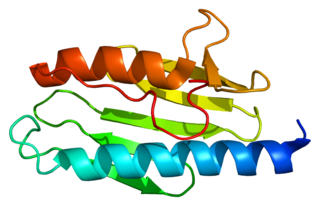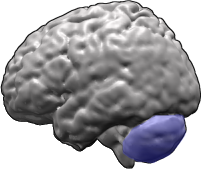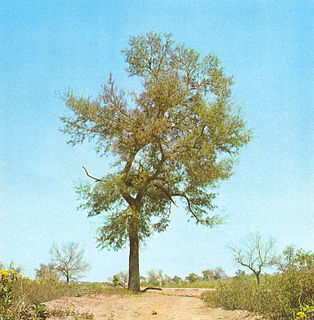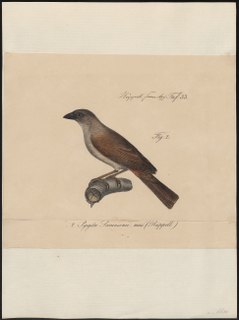Ataxia is a neurological sign consisting of lack of voluntary coordination of muscle movements that can include gait abnormality, speech changes, and abnormalities in eye movements. Ataxia is a clinical manifestation indicating dysfunction of the parts of the nervous system that coordinate movement, such as the cerebellum. Ataxia can be limited to one side of the body, which is referred to as hemiataxia. Several possible causes exist for these patterns of neurological dysfunction. Dystaxia is a mild degree of ataxia. Friedreich's ataxia has gait abnormality as the most commonly presented symptom. The word is from Greek α- [a negative prefix] + -τάξις [order] = "lack of order".
Ataxia–telangiectasia, also referred to as ataxia–telangiectasia syndrome or Louis–Bar syndrome, is a rare, neurodegenerative, autosomal recessive disease causing severe disability. Ataxia refers to poor coordination and telangiectasia to small dilated blood vessels, both of which are hallmarks of the disease.

Friedreich's ataxia is an autosomal-recessive genetic disease that causes difficulty walking, a loss of sensation in the arms and legs, and impaired speech that worsens over time. Symptoms generally start between 5 and 20 years of age. Many develop hypertrophic cardiomyopathy and require a mobility aid such as a cane, walker, or wheelchair in their teens. As the disease progresses, people lose their sight and hearing. Other complications include scoliosis and diabetes mellitus.

Spinocerebellar ataxia (SCA) is a progressive, degenerative, genetic disease with multiple types, each of which could be considered a neurological condition in its own right. An estimated 150,000 people in the United States have a diagnosis of spinocerebellar ataxia at any given time. SCA is hereditary, progressive, degenerative, and often fatal. There is no known effective treatment or cure. SCA can affect anyone of any age. The disease is caused by either a recessive or dominant gene. In many cases people are not aware that they carry a relevant gene until they have children who begin to show signs of having the disorder.

Schinopsis lorentzii is a hardwood tree known as red quebracho, native of the Paraguayan subtropical area, which forms forests in Gran Chaco region of Argentina, in Paraguay, and Bolivia. Some of its common names are coronillo, quebracho Cornillo (Brazil), quebracho chaqueño, quebracho colorado santiagueño, quebracho macho, and quebracho bolí. The qualification colorado ("red") differentiates it from other species of common quebracho tree, the Aspidosperma quebracho-blanco. The indication santiagueño is made to distinguish it from quebracho colorado chaqueño, a closely related species.

Schinopsis is a genus of South American trees in the family Anacardiaceae, also known by the common names quebracho, quebracho colorado and red quebracho. In Brazil it is known as baraúna or braúna.

Schinopsis balansae is a hardwood tree known as willow-leaf red quebracho which forms forests in the subtropical Gran Chaco ecoregion of north-eastern Argentina, and Paraguay. It is also found in the wild Pantanal vegetation in Brazil. Some of its vernacular names are quebracho colorado chaqueño and quebracho santafesino. Other species, like Schinopsis lorentzii, bear the general name quebracho and have similar properties and uses. S. balansae shares its habitat with a species of the same genus, S. heterophylla, and the two are often confused.
Sensory ataxia is both a symptom and a sign in neurology. It is a form of ataxia caused not by cerebellar dysfunction but by loss of sensory input into the control of movement.
Cerebellar ataxia is a form of ataxia originating in the cerebellum. Non-progressive congenital ataxia (NPCA) is a classical presentation of cerebral ataxias.
Episodic ataxia (EA) is an autosomal dominant disorder characterized by sporadic bouts of ataxia with or without myokymia. There are seven types recognized but the majority are due to two recognized entities. Ataxia can be provoked by psychological stress or startle, or heavy exertion, including exercise. Symptoms can first appear in infancy. There are at least six loci for EA, of which 4 are known genes. Some patients with EA also have migraine or progressive cerebellar degenerative disorders, symptomatic of either familial hemiplegic migraine or spinocerebellar ataxia. Some patients respond to acetazolamide though others do not.

The pale-fronted nigrita is a common species of estrildid finch found in Africa. It has an estimated global extent of occurrence of 2,500,000 km2.

Ataxia, described by Haldeman in 1847, is an American genus of longhorn beetles of the subfamily Lamiinae, tribe Pteropliini.
Schinopsis haenkeana is a species of plant in the family Anacardiaceae. It is found in Argentina and Bolivia. Its vernacular names include quebracho blanco, horco quebracho.
Quebracho is a common name in Spanish to describe very hard wood tree species. The etymology of the name derived from quiebrahacha, or quebrar hacha, meaning "axe-breaker".
Schinopsis heterophylla, the quebracho colorado mestizo, is a South American tree species in the genus Schinopsis.

Leuco-fisetinidin is a flavan-3,4-diol (leucoanthocyanidin), a type of natural phenolic substance. It is the monomer of condensed tannins called profisetinidins. Those tannins can be extracted from the heartwood of Acacia mearnsii or from the heartwoods of Schinopsis balansae, Schinopsis quebrachocolorado and from commercial quebracho extract.

Schinopsis brasiliensis is a species of flowering plant in the cashew family known by the common names baraúna or braúna.

Acetergamine is an organic chemical compound; specifically it is a derivative of ergoline, making it a member of the ergotamine family of compounds. Acetergamine currently has no mainstream uses, however its potential as an alpha-1 blocker and vasodilator has led to it being covered in several patents concerning therapies for erectile dysfunction. It has also been investigated as a treatment for cerebellar ataxia.
Bolteria luteifrons is a species of plant bug in the family Miridae. It is found in North America.

Truncal ataxia is a wide-based "drunken sailor" gait characterised by uncertain starts and stops, lateral deviations and unequal steps. It is an instability of the trunk and often seen during sitting. It is most visible when shifting position or walking heel-to-toe.








